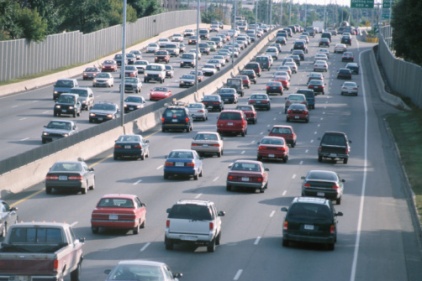High school drivers are safer these days…
Except for that texting problem

 U.S. high school students have shown significant progress over the past two decades in improving many health-risk behaviors associated with the leading cause of death among youth—motor vehicle crashes—according to the 2011 National Youth Risk Behavior Survey (YRBS) released recently by the Centers for Disease Control and Prevention. However, youth are engaging in other dangerous practices such as texting and emailing while driving.
U.S. high school students have shown significant progress over the past two decades in improving many health-risk behaviors associated with the leading cause of death among youth—motor vehicle crashes—according to the 2011 National Youth Risk Behavior Survey (YRBS) released recently by the Centers for Disease Control and Prevention. However, youth are engaging in other dangerous practices such as texting and emailing while driving.
Although motor vehicle crashes account for more than 1 in 3 U.S. teen deaths each year, findings from this survey show dramatic improvements during the past 20 years in motor vehicle safety among youth:
- From 1991 to 2011, the percentage of high school students who never or rarely wore a seatbelt declined from 26 to 8.
- From 1991 to 2011, the percentage of students who rode with a driver who had been drinking alcohol during the past 30 days declined from 40 to 24.
- The percentage of high school students who had driven a car during the past 30 days when they had been drinking alcohol decreased from 17 in 1997 to 8 in 2011.
- Between 2009 and 2011 encouraging improvements were also shown in the percentage of students wearing a seat belt, not riding with a driver who had been drinking alcohol and not driving a car when they had been drinking alcohol.
Despite this progress, the YRBS found that the use of technology among youth has resulted in new risks; specifically, 1 in 3 high school students had texted or e-mailed while driving a car or other vehicle during the past 30 days. The survey also found that 1 in 6 had been bullied through email, chat rooms, instant messaging, websites, or texting during the past 12 months. 2011 was the first year the YRBS included questions about bullying through electronic media and about texting or emailing while driving.
“We are encouraged that more of today’s high school students are choosing healthier, safer behaviors, such as wearing seat belts, and are avoiding behaviors that we know can cause them harm, such as binge drinking or riding with impaired drivers,” said Howell Wechsler, Ed.D., M.P.H., director of CDC’s Division of Adolescent and School Health. “However, these findings also show that despite improvements, there is a continued need for government agencies, community organizations, schools, parents, and other community members to work together to address the range of risk behaviors prevalent among our youth.”
The 2011 YRBS results show that high school students still engage in risk behaviors that are harmful to their health and increase their risks for disease and injury:
- Current cigarette use did not change significantly between 2009 (19 percent) and 2011 (18 percent).
- During that same time period, current marijuana use increased from 21 percent to 23 percent although there has been an overall decrease in current marijuana use (from 27 percent in 1999 to 23 percent in 2011).
- Current marijuana use among high school students was more common than current cigarette use (23 percent compared to 18 percent).
About the Youth Risk Behavior Surveillance System
CDC’s YRBS System is the only surveillance system designed to monitor a wide range of priority health risk behaviors among representative samples of high school students at the national, state, and local levels.
The 2011 YRBS data are available at www.cdc.gov/yrbs.
Looking for a reprint of this article?
From high-res PDFs to custom plaques, order your copy today!





